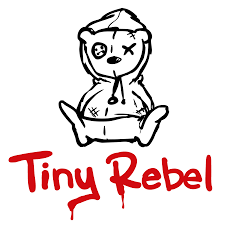What’s your leadership style? Directing? Mentoring? Supporting? Enabling?
“You probably identify more strongly with one or two of these, but the key thing to understand is that exceptional leaders use all of these leadership styles, selecting the most appropriate one for the particular circumstances,” says Nevra Sezgin, Impellus’s Assessment Team Manager. “And it’s also important to note that these leadership styles apply both when leading a team and when managing individuals.
“This is a crucial topic to understand if you are writing the assignment related to our Leadership Skills Development course which includes a detailed exploration and analysis of leadership styles. It’s also very important to use the correct terminology for this topic in your assignment.”
Good to know…
These four leadership styles can be used:
- In the order presented below as you move through the different stages with your team.
- As needed depending on the circumstances. For example, the directing style might be appropriate to use with an experienced team member who needs to learn a new task.
Four leadership styles
1. Directing
If you are leading teams or individuals who are new to a task or taking on different responsibilities, the ‘directing’ leadership style is most likely to be appropriate. This means you will need to:
- Define the required tasks.
- Clarify roles and responsibilities.
- Provide clear instructions and expectations, including deadlines.
- Monitor progress closely and offer detailed guidance.
2. Mentoring
As your team begins to develop their skills and confidence they will still need significant guidance and encouragement, including clear task direction and support with personal development. At this stage, a mentoring style of leadership is often the most effective choice. The mentoring leader will:
- Offer guidance on how to approach and complete tasks.
- Support team members’ personal development.
- Encourage and enable open communication and feedback.
- Share relevant insights and experiences.
It’s important to understand that the mentoring style of leadership is not the same as being a mentor, which is a specific, often long-term, role that focuses on developing a particular individual (the mentee) via a one-to-one relationship.
3. Supporting
Effective leaders will begin to take a step back as their team gains experience, knowledge and confidence. However, a certain level of support is still required to ensure tasks are completed and goals achieved. This is when the supporting style of leadership comes into play. The supporting leader will:
- Encourage and empower team members to take on more responsibilities.
- Offer positive reinforcement and recognition.
- Foster a mutually supportive and collaborative work environment.
- Provide help on request but enable autonomy and self-direction.
The supporting style of leadership is not the same as being a ‘supportive manager’ which is a more general term to describe managers who prioritise the personal and professional wellbeing of their teams.
4. Enabling
When teams and individuals have shown they are competent and confident in their roles, the skilled leader will trust them to take on more responsibility and make independent decisions. The enabling leader will:
- Be available to provide guidance if needed but avoid micromanaging.
- Provide opportunities for individuals to take the lead on projects.
- Monitor progress but allow teams and individuals to manage their own workload and deadlines.
Find out more about our Leadership Skills Development course.






















